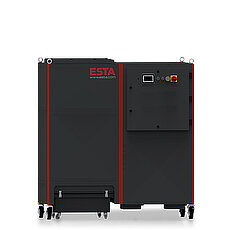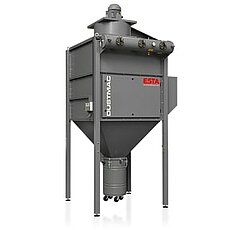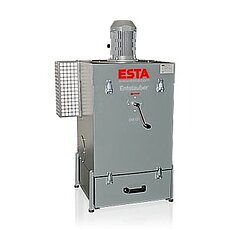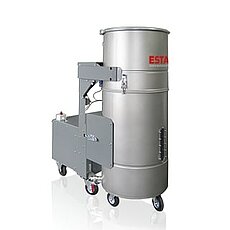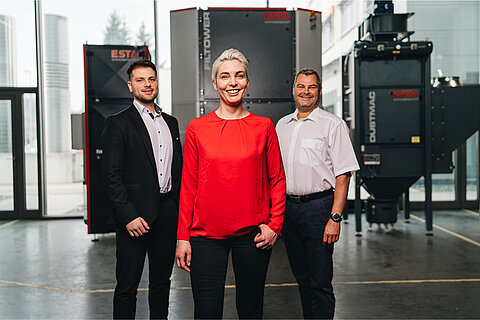DRY SEPARATOR OR WET SEPARATOR?
Dry dust separators and wet dust separators are suitable for the removal of dusts. The design of the optimal extraction system is based on individual factors such as process, installation situation, external influences, etc. This results in various possible solutions that may require additional pre-separators or fire and explosion protection measures.
DRY SEPARATOR
WHEN DO I USE A DRY SEPARATOR?
A dry separator is suitable for work processes such as grinding, polishing, deburring, welding, soldering, laser cutting, sawing, separating, transfer and mixing. It is used for extracting dry, free-flowing, long-fibre, sticky, flammable dusts, etc. Dry dust separation systems are available with various certification marks for hazardous and carcinogenic dusts in the recirculation / exhaust air system.
WHAT ARE THE ADVANTAGES OF A DRY SEPARATOR AS OPPOSED TO A WET SEPARATOR?
- FU application possible (energy saving)
- Outdoor installation
- Various discharge options
- Price (cheaper than wet separator)
- Various safety systems (spark pre-separator, ABC extinguishing system, etc.)
- Flexibility
- Easy handling (emptying)
- Various pre-separation options possible
- Can be used for small amounts of dust through to large quantities
- Different filter materials possible
- ATEX versions possible
- Very high degree of separation
- Simple dust disposal
WHAT ARE THE DISADVANTAGES OF A DRY SEPARATOR COMPARED TO A WET SEPARATOR?
- Safety systems are cost-intensive (for example ABC extinguishing system)
- Wearing parts (follow-up filter costs)
- Fire risk
SUITABLE PRODUCTS
WET SEPARATOR
WHEN DO I USE A WET SEPARATOR?
A wet separator is suitable for processes with a high number of flying sparks, when processing aluminium dusts (DGUV Rule 109-001) and for the extraction of explosive, sticky, damp and flammable dusts. Typical processes include grinding, polishing, deburring, sawing, cutting, transferring and mixing. Wet separators are available as mobile as well as stationary units.
WHAT ARE THE ADVANTAGES OF A WET SEPARATOR COMPARED TO A DRY SEPARATOR?
- ESTA wet separators with type test for the extraction of aluminium dusts are available (DGUV Rule 109-001) = no further chargeable trade association tests necessary!
- Inexpensive solution for aluminium dusts compared to dry extraction
- The risk of fire is reduced to a minimum (dust and ignition sources are wetted with water)
- No filter wear (filter medium = water)
WHAT ARE THE DISADVANTAGES OF A WET SEPARATOR COMPARED TO A DRY SEPARATOR?
- High humidity in the exhaust air (due to circulating air)
- Risk of rust on components of the wet separator = more cleaning work required
- FU operation very conditionally possible (water vortex must be generated for separation)
- Outdoor installation associated with higher costs / work (risk of freezing!)
- Flooding of dusts (e. g. plastic) possible
- Lower degree of separation compared with the dry system
- Dust disposal
SUITABLE PRODUCTS
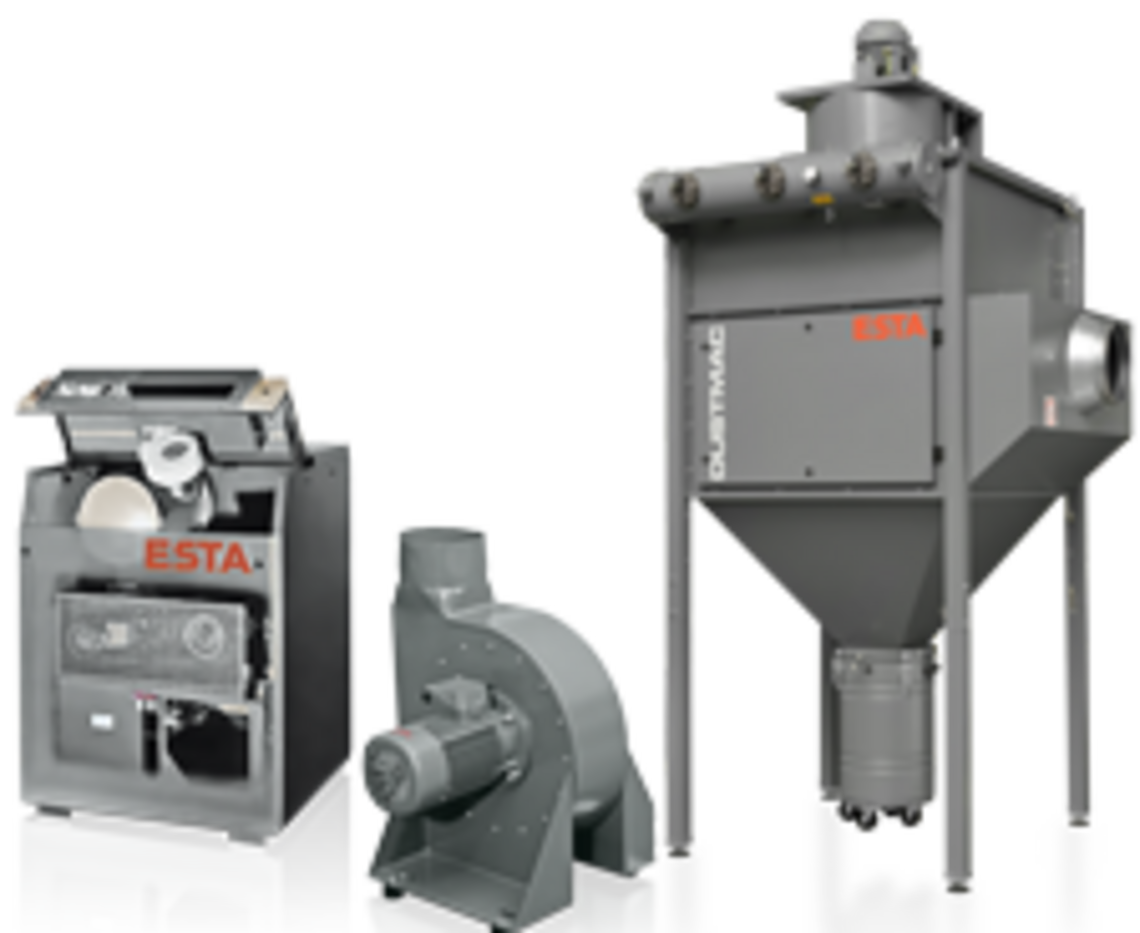

CONTACT
WE ARE HAPPY TO PROVIDE A PERSONAL CONSULTATION
We can adapt our exhaust installations to your needs. Tailor-made, modular and individual. Ask us!
